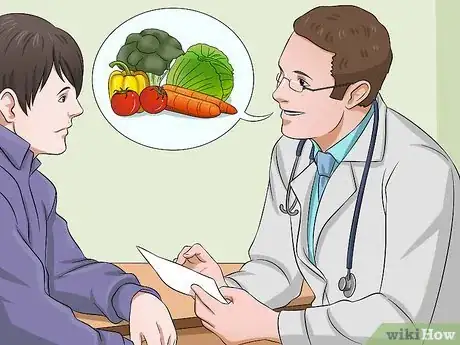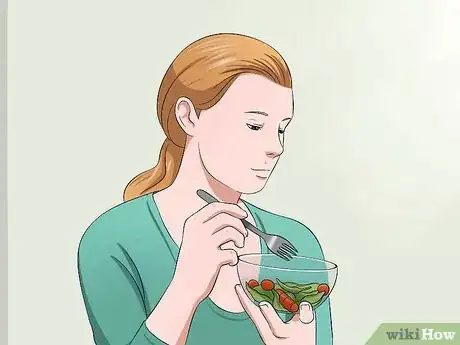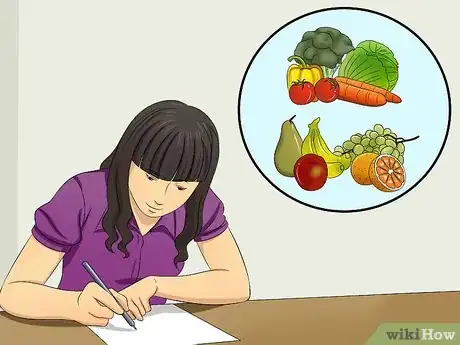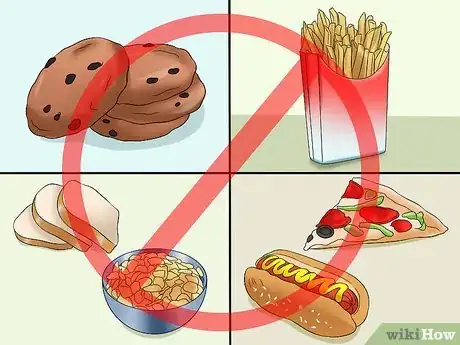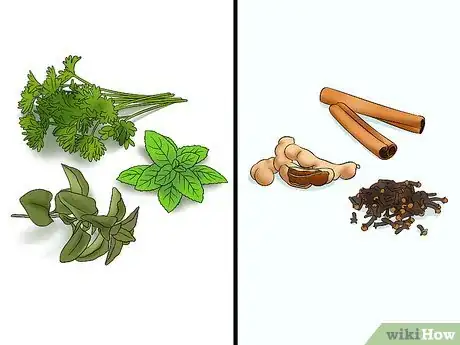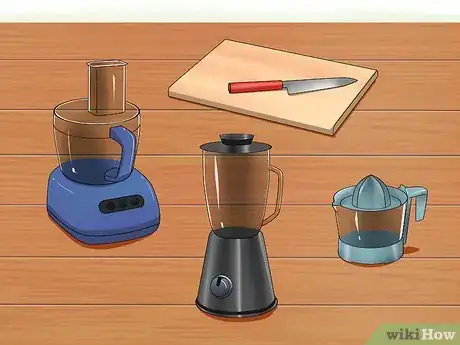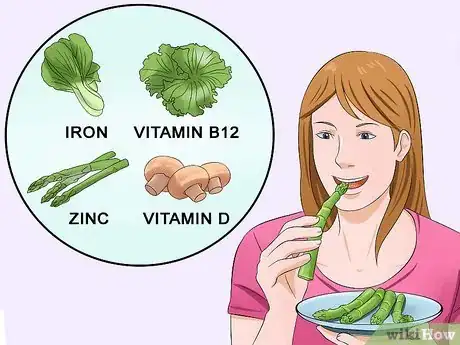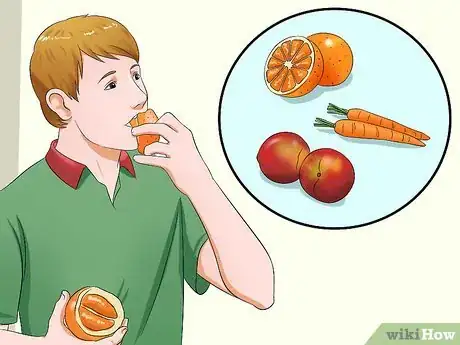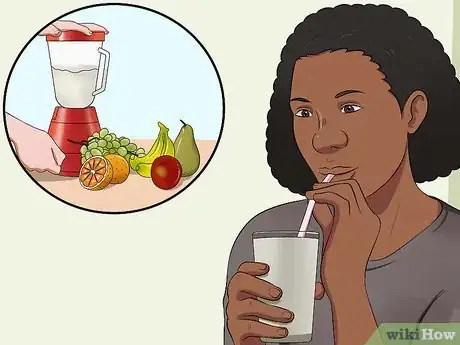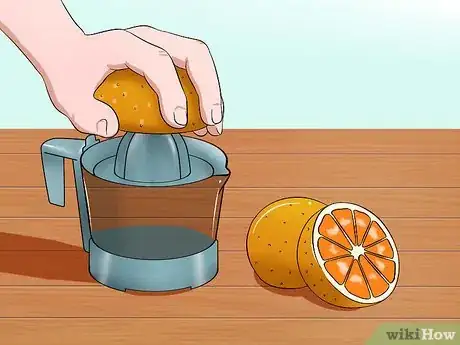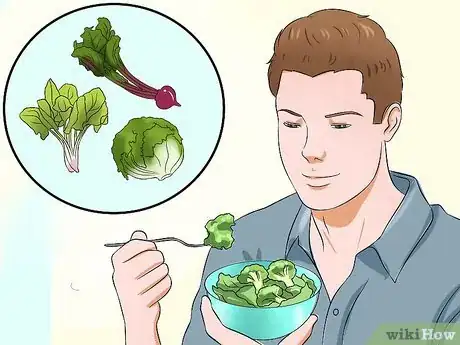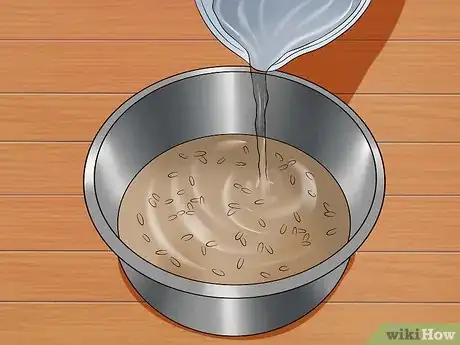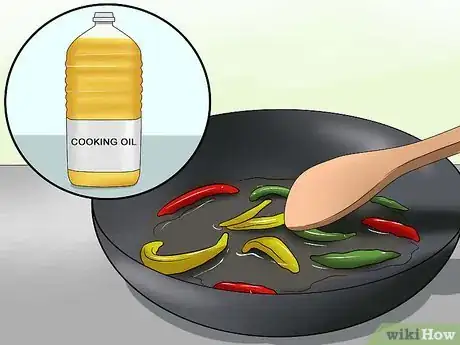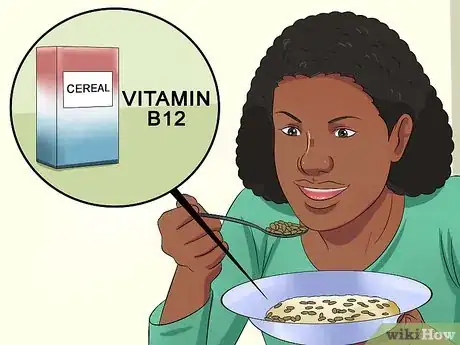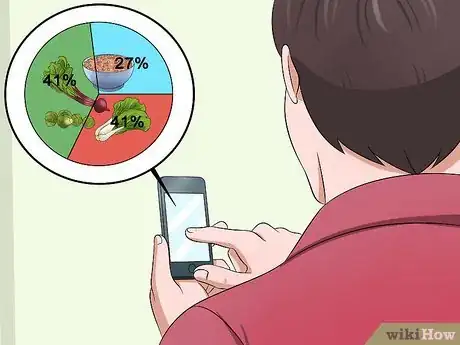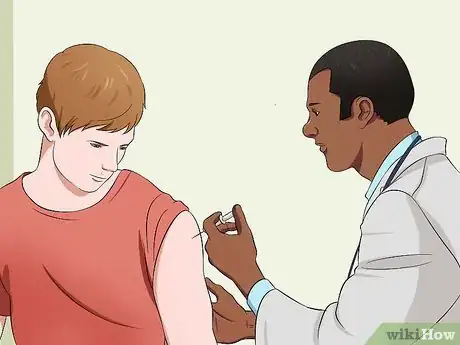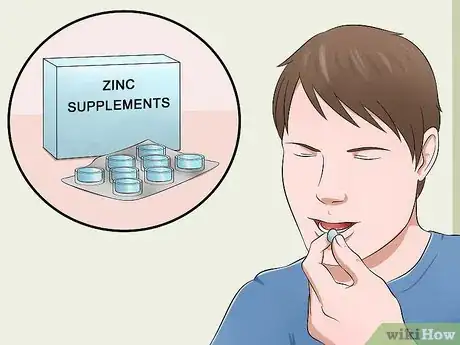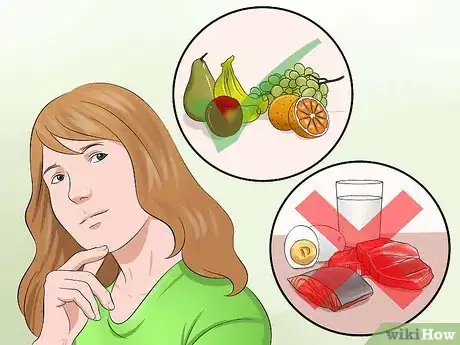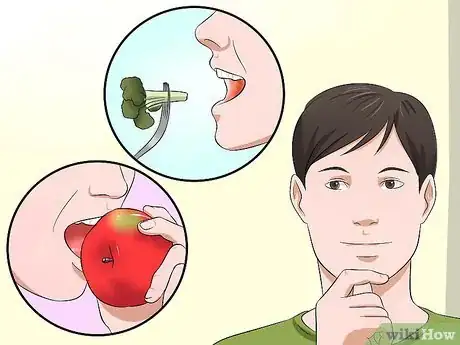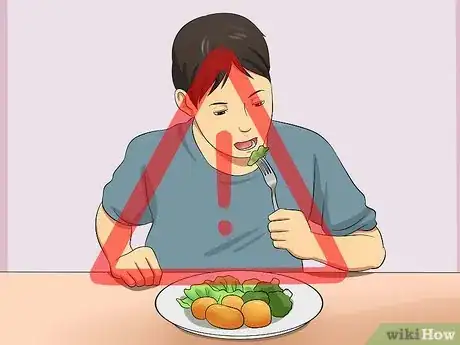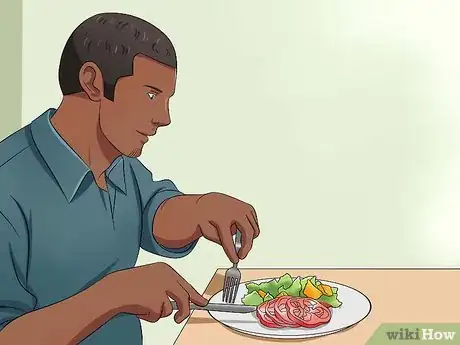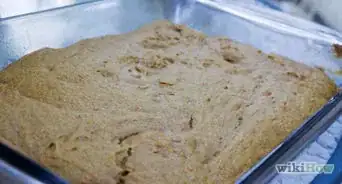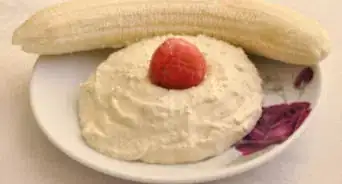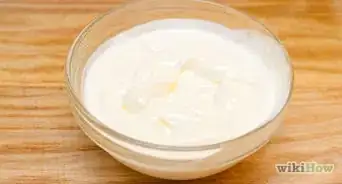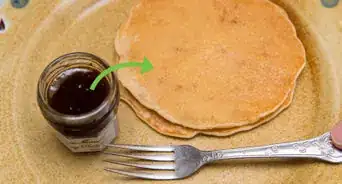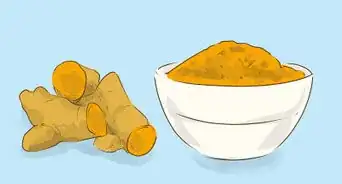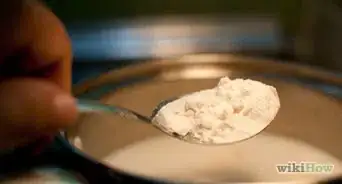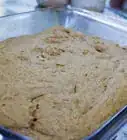This article was co-authored by Dee Dine. Dee Dine is a Nutrition and Vegan Food Specialist and the founder of Green Smoothie Gourmet, a blog dedicated to healthy, plant-based vegan, limited ingredient recipes. Dee holds a BS in Biology/Biochemistry with an emphasis in Immunology. Dee has written two books full of healthy plant-based recipes, including chocolate desserts, snacks, juices and, wellness shots. They are: "Crazy Healthy with 4 Ingredients: Dessert, Breakfast & Snack Vegan Recipes" and "4-Ingredient Smoothies and Juices: 100 Easy Nutritious Recipes for Lifelong Health". Dee is an editor with TheFeedFeed, a crowdsourced digital cooking publication, and has been featured on BuzzFeed, Marie Claire, the Academy of Culinary Nutrition, Well + Good, and Hello Glow.
There are 24 references cited in this article, which can be found at the bottom of the page.
This article has been viewed 22,669 times.
People start raw vegan diets for many reasons, including weight loss, the health benefits, and detoxing. A vegan diet contains only plant sources for food and nutrients, and excludes all animal products, and a raw diet is where no food is cooked. Because a raw vegan diet is full of organic fruits, vegetables, and superfoods that haven't been cooked to eliminate the nutrients, it can give your body everything it needs for maximum health benefits. If this motivates you, there are ways to begin a raw vegan diet.
Steps
Getting Started
-
1Consider talking to a nutritionist. If you are serious about starting a raw vegan diet, talk to a nutritionist. A qualified nutritionist can help you plan meals, readjust your daily routine, and help you get all the proper nutrients you need.
-
2Start slow. Even if you are vegan, it can be overwhelming or difficult to transition to a raw diet. Don’t try to do it all at once. Instead, try doing it one day at a time, or one meal at a time. Don’t get discouraged if you can’t jump into the diet immediately. You will need an adjustment period.[1]
- Try being raw until dinner time. This can be a great method if you are only going partially raw. You eat raw until dinner, then eat some cooked foods with your dinner.
Advertisement -
3Make a list of raw foods you like. One way to get started with a raw diet is to make a list of raw fruits and vegetables you already enjoy. This gives you a basis to start building your list of foods and menu.
- Make a list of raw foods you’d like to incorporate more into your diet. What would you like to eat or to try? Add these to your foods list.
-
4Eliminate foods from your diet slowly. By transitioning to a vegan raw diet, you will eliminate a lot of foods from your diet, like sugar, salt, dairy, grains, and processed foods. Start slowly. Try getting rid of one food type at a time. This can help you ease into this new eating lifestyle.
- Refined forms of sugar, like dextrose, corn syrup, rice syrup, and malt, should be avoided. You can substitute with raw honey, raw agave, maple syrup, raisins, or dates. Stevia, coconut sugar, vanilla, and cinnamon are best. Also don't use artificial sweeteners, like aspartame and Splenda.[2] Stay away from all white or processed sugars.
- Salt should be eliminated from your diet. However, some people on raw diets use minimal salt. If you are going to use salt, don't use table salt or salt without any chemical additives, like iodized salt. Instead, use unrefined sea salt, or organic salt from plants, like celery or seaweed.[3]
-
5Use organic, raw-friendly herbs and spices. Not all herbs and spices are appropriate for a raw diet. When using spices, make sure they are organic and air-dried without preservatives and other agents.[4] With herbs, grow your own herbs and eat them fresh.[5] You can dry your own herbs and spices, too.
- Check to see if the herbs or spices have been dried using heat. If so, it's not raw.[6]
- Some people who follow a raw diet don't use spices. They follow the idea that you can only eat something if you can make a meal of it, and since you can't make a meal of a spice, you shouldn't eat it. They also believe the spices are toxic because they confuse taste buds and give no nutritional benefit.[7] You will have to decide if spices are allowed in your own personal raw diet.
-
6Get the proper kitchen appliances. A raw vegan diet requires different appliances than a traditional diet. You will need a juicer, dehydrator, blender, food processor, and hand blender. You may also want to get a mandolin or vegetable slicer. You also will need a food thermometer, cutting board, and knives.[8]
- These can all be purchased at a department store.
-
7Consider a partly raw diet. Since a diet that is entirely raw and vegan can eliminate important nutrients, consider eating a partial or mostly raw diet. You need to make sure you get enough iron, zinc, B12, omega-3s, and vitamin D.[9] Make sure you incorporate these nutrients into your diet.
Eating the Right Foods
-
1
-
2Make smoothies. Smoothies are one of the best ways to eat raw. Throw in all sorts of fruits and vegetables. Smoothies make good breakfasts and snacks.
-
3Learn to juice. Juicing is another popular way to eat with a raw diet. After you invest in a juicer, you can juice almost all fruits and vegetables. Popular things to juice are celery, carrots, and greens like spinach and kale.
- You can also juice most fruits, which adds nice flavor to your juice.
-
4Buy organic. To get the most out of your raw vegan diet, make sure to buy organic. This ensures you are not getting any harmful toxins from your raw foods.[12] This can be expensive, so you may need to start small at first.
-
5Eat leafy greens. One of the major staples of a raw vegan diet are leafy greens. You can use leafy greens for salads, in smoothies, or when juicing. Leafy greens include kale, spinach, Swiss chard, collard greens, beet greens, arugula, and lettuce.[13]
-
6Include soaked and sprouted grains. When you eat grains as a raw vegan, make sure to soak and sprout the grains.[14] Grains you can use for this diet are amaranth, millet, barley, buckwheat, kamut, oats, wheat berries, and wild rice.[15] You should also limit the amount of sprouted grains you eat since they contain irritants.[16] You can steam grains, just make sure to keep it at a low temperature.[17] Make sure the grains you eat are gluten free.[18]
- Some people believe you shouldn't eat grains at all on a raw vegan diet.
- You can also sprout some legumes. However, some people believe that larger beans, like soybeans, are not healthy. By sprouting them, you can eliminate what some believe are toxins, but they don't taste the best. Generally, people on a raw vegan diet don't eat legumes.[19]
- Sprouts, such as radish, clover, and broccoli, are safe raw.[20]
-
7
-
8Snack on nuts and seeds. Nuts and seeds are great additions to your raw vegan diet. You can use them on top of salads, as snacks, in desserts, to make crackers, and in many other things.[23]
- Try almonds, walnuts, macadamia nuts, sunflower seeds, hemp seeds, chia seeds, and pumpkin seeds, among numerous others.
-
9Find sources of omega-3 fats. Fish are not the only source of omega-3 fats. Vegan-friendly sources include:[24]
- Seeds, such as flaxseeds (golden or dark brown), chia seeds, or hemp seeds, which can all be raw
- Leafy green vegetables, like the greens of beets, radishes, mustard, collard, Swiss chard, turnips, spinach, kale, Chinese cabbage (bok choy), cabbage, brussel sprouts, broccoli, arugula, field greens, purslane, and romaine lettuce, which can also be raw
-
10Eat sources of vitamin B12. Sources of vegan-safe vitamin B12 include fortified cereals and fortified yeast products.[25] You can mix with nuts or seeds to make a snack mix.
Keeping Track of Your Nutrients
-
1Keep track of your food. When choosing this diet, you need to keep track of your food. Use a nutrient calculator to ensure you are getting all the nutrients your body needs. There are many nutrient trackers you can get for your computer or phone that can help you with this.
-
2Test your blood. If you are going to start a raw vegan diet, have your blood regularly tested for deficiencies. Make sure your doctor is aware of your dietary habits. If your doctor finds any deficiencies, you can figure out ways to fix them. You should be able to do this by eating certain foods or taking supplements.
-
3Take supplements. If your food isn’t giving you all your nutrients, take supplements to fill in the gaps. You can find vegan-safe supplements.
- You may need these supplements to get enough zinc, iron, selenium, and calcium.
Understanding a Raw Vegan Diet
-
1Understand what it means to be vegan. Vegans do not eat any animal products, and only eat foods from plant sources. This means that vegans do not eat meat, fish, eggs, or dairy products. Instead, they eat fruits, vegetables, grains, nuts, and seeds.[26]
-
2Understand a raw diet. A raw diet is where you eat living, uncooked plant-based foods, like vegetables, fruits, seeds, and nuts. On a raw diet, no food is heated over 118F. Instead, foods are eaten fresh, dehydrated, or fermented. This is done because some believe that cooking food destroys helpful enzymes and destroy the nutritional value of the food.[27]
-
3Learn the general risks. Vegan diets are very healthy, though vegans have to ensure that they get sufficient amounts of nutrients that are easily obtained from animal products. People who follow a raw vegan diet can have problems getting nutrients like protein, iron, calcium, zinc, selenium, vitamin K, vitamin B12, and omega-3 essential fatty acids.[28]
- Studies have indicated that raw vegan diets can increase the risk of bone loss, osteopenia (soft bones), and osteoporosis (brittle bones).[29]
- Some women on raw vegan diets lack enough fat to make estrogen and may cease having periods and become infertile.[30] [31]
- While a vegan diet can be recommended if the person knows that they have to get enough nutrients, a raw vegan diet is not recommended, especially for children, the elderly, and those with chronic conditions.
-
4Know the risk for children. Children raised on raw vegan diets are at serious risks for certain problems, like growth delays, developmental delays, and neurological disorders. This occurs because the nutrients that the diet makes so difficult to obtain in sufficient amounts are those that are most critical in growth and development, along with a healthy nervous and immune system.
-
5Know that a raw vegan diet requires more food to obtain adequate calories. Though it varies for each individual, the average person requires about 2,000 calories per day for a healthy, functioning body. Because the elements of a raw vegan diet are extremely low in calories, you may need to each much larger quantities to hit 2,000 calories.[34]
- At bare minimum, women should eat at least 1,200 calories a day, 1,800 for men. This is the bare minimum necessary to survive, but you may suffer significant impairments including fatigue, diarrhea, constipation, gallstones, a slowed metabolism, muscle loss, and cognitive impairment.[35]
Expert Q&A
-
QuestionWhat kind of exercises are best for toning my legs and butt if I'm vegan?
 Julian Arana, M.S.eD., NCSF-CPTJulian Arana is a Personal Trainer and the Founder of B-Fit Training Studios, a personal training and wellness set of studios based in Miami, Florida. Julian has over 12 years of personal training and coaching experience. He is a certified personal trainer (CPT) by the National Council on Strength and Fitness (NCSF). He has a BS in Exercise Physiology from Florida International University and an MS in Exercise Physiology specializing in strength and conditioning from the University of Miami.
Julian Arana, M.S.eD., NCSF-CPTJulian Arana is a Personal Trainer and the Founder of B-Fit Training Studios, a personal training and wellness set of studios based in Miami, Florida. Julian has over 12 years of personal training and coaching experience. He is a certified personal trainer (CPT) by the National Council on Strength and Fitness (NCSF). He has a BS in Exercise Physiology from Florida International University and an MS in Exercise Physiology specializing in strength and conditioning from the University of Miami.
Certified Personal Trainer Squats are really phenomenal if you're trying to work on your lower body. Barbell and goblet squats are great options. You can also do reverse lunges, hip thrusts, or step ups.
Squats are really phenomenal if you're trying to work on your lower body. Barbell and goblet squats are great options. You can also do reverse lunges, hip thrusts, or step ups.
References
- ↑ http://www.onegreenplanet.org/vegan-food/5-different-ways-to-get-started-with-raw-food/
- ↑ http://www.thebestofrawfood.com/raw-food-diet-conversion-chart.html
- ↑ http://www.thebestofrawfood.com/raw-food-diet-conversion-chart.html
- ↑ http://nouveauraw.com/the-raw-food-diet-please-read/
- ↑ http://www.living-foods.com/articles/rawherbs.html
- ↑ http://www.living-foods.com/articles/rawornot.html
- ↑ http://www.rawfoodexplained.com/condiments/condiments-seasonings-and-spices.html
- ↑ http://www.thebestofrawfood.com/best-raw-food-juicer.html
- ↑ https://www.ncbi.nlm.nih.gov/pmc/articles/PMC5598028/
- ↑ Dee Dine. Nutrition & Vegan Food Specialist. Expert Interview. 14 October 2020.
- ↑ http://www.onegreenplanet.org/vegan-food/5-different-ways-to-get-started-with-raw-food/
- ↑ http://www.rawfoodlife.com/starting_on_raw.html
- ↑ http://www.onegreenplanet.org/vegan-food/eating-raw-101-the-essential-raw-vegan-food-groups/
- ↑ Dee Dine. Nutrition & Vegan Food Specialist. Expert Interview. 14 October 2020.
- ↑ http://www.onegreenplanet.org/vegan-food/eating-raw-101-the-essential-raw-vegan-food-groups/
- ↑ http://www.thenourishinggourmet.com/2009/01/why-sprout.html
- ↑ http://www.dummies.com/how-to/content/raw-food-for-dummies-cheat-sheet.html
- ↑ http://www.dummies.com/how-to/content/raw-food-for-dummies-cheat-sheet.html
- ↑ http://www.living-foods.com/articles/legume.html
- ↑ http://www.thenourishinggourmet.com/2009/01/why-sprout.html
- ↑ Dee Dine. Nutrition & Vegan Food Specialist. Expert Interview. 14 October 2020.
- ↑ http://www.onegreenplanet.org/vegan-food/eating-raw-101-the-essential-raw-vegan-food-groups/
- ↑ http://www.onegreenplanet.org/vegan-food/eating-raw-101-the-essential-raw-vegan-food-groups/
- ↑ http://www.onegreenplanet.org/natural-health/plant-based-foods-with-the-highest-amount-of-omega-3-fatty-acids/
- ↑ http://www.veganhealth.org/b12/vegansources
- ↑ http://www.nhs.uk/Livewell/Vegetarianhealth/Pages/Vegandiets.aspx
- ↑ http://www.rawfoodlife.com/starting_on_raw.html
- ↑ http://www.livescience.com/26278-risks-raw-vegan-diet.html
- ↑ http://archinte.jamanetwork.com/article.aspx?articleid=486478
- ↑ Koebnick C, Strassner C, Hoffmann I, Leitzmann C. Consequences of a long-term raw food diet on body weight and menstruation: results of a questionnaire survey. Ann Nutr Metab. 1999;43(2):69-79.
- ↑ http://www.veganhealth.org/articles/cooking#fn1
- ↑ http://naturalhygienesociety.org/diet-veganbaby.html
- ↑ http://www.livescience.com/26278-risks-raw-vegan-diet.html
- ↑ http://www.beyondveg.com/billings-t/cal-par/calorie-paradox1a.shtml
- ↑ http://www.shape.com/healthy-eating/diet-tips/10-things-you-dont-know-about-calories
